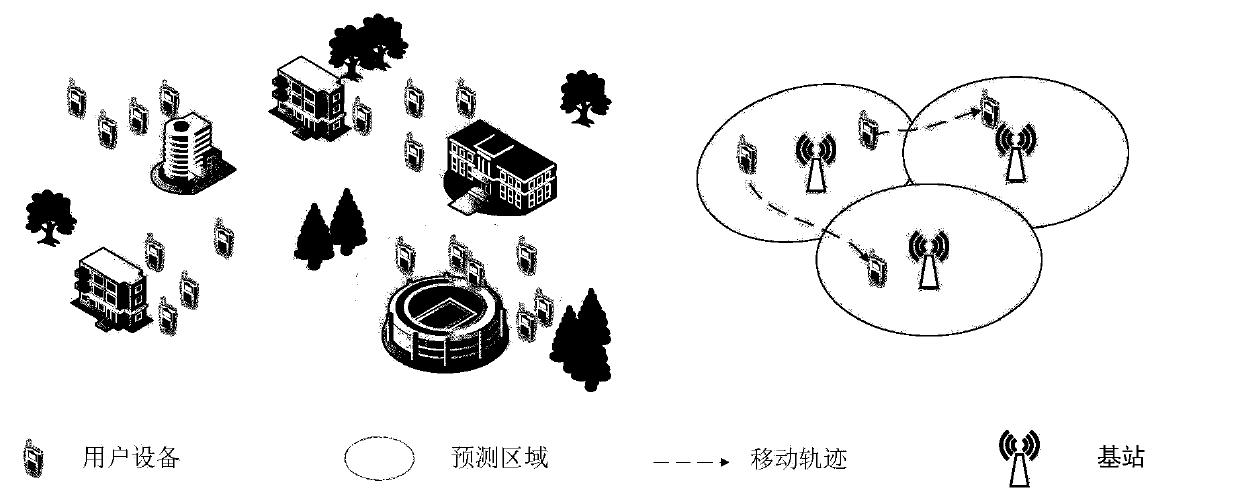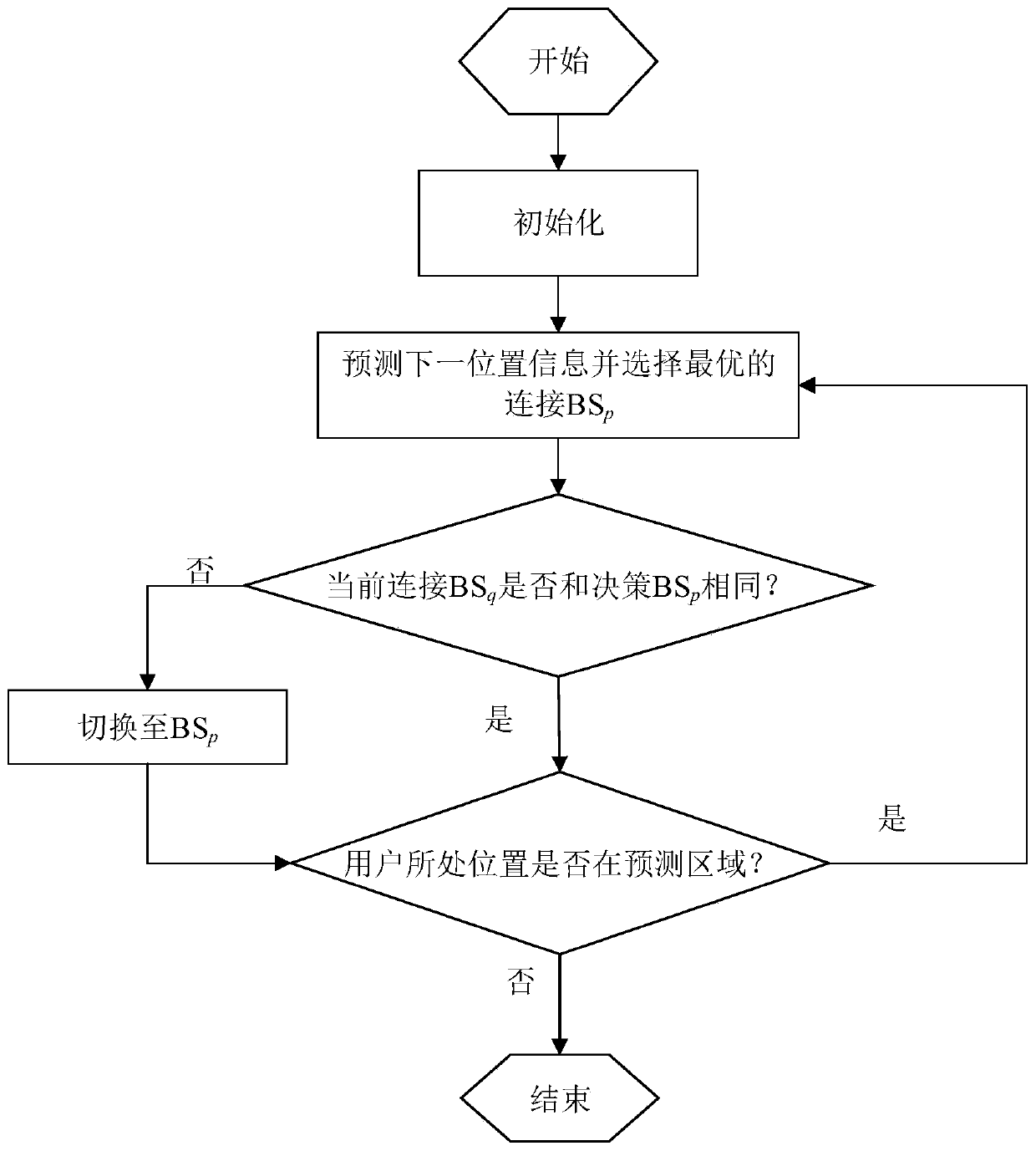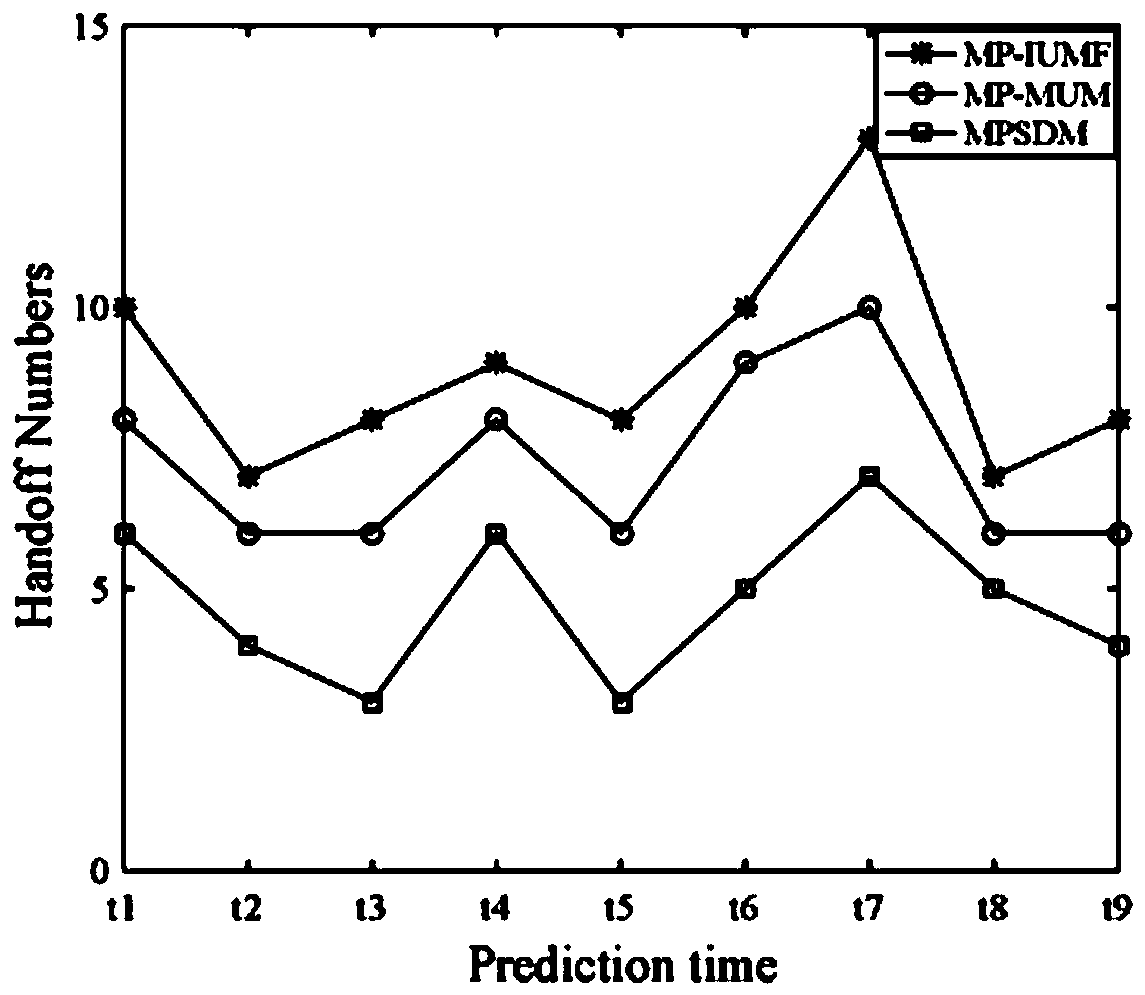A mobility prediction method based on fuzzy clustering in outdoor crowded places
A fuzzy clustering and crowd-intensive technology, applied in location-based services, character and pattern recognition, instruments, etc., can solve problems such as inapplicability of prediction models, and achieve the effect of increasing residence time and reducing switching times
- Summary
- Abstract
- Description
- Claims
- Application Information
AI Technical Summary
Problems solved by technology
Method used
Image
Examples
Embodiment
[0067] Such as figure 1 As shown in the figure, in a campus with dense crowds, a small base station (Small-cell Base Station, SBS) is deployed in this area, with a coverage range of 100m. Mobile user trajectories are extracted from Reference [3] (Reference 3: I.Rhee, M.Shin, S.Hong, K.Lee, S.Kim, and S.Chong, “Crawdad dataset ncsu / mobilitymodels,” downloaded from The user data in http: / / crawdad.org / crawdad / ncsu / mobilitymodels / 20090723 / ,Jul2009.) records the user's location coordinates every 30 seconds. According to the comparison of simulation performance, user trajectories in this scenario are divided into 6 groups, and the number of handovers of users in each area and the residence time in each cell are counted.
[0068] In order to prove the performance of the Mobility Prediction Optimized Handover Scheme (MPSDM) proposed in this paper, two handover mechanisms are selected for comparison.
[0069] Mechanism 1 (MP-IUM): This scheme is based on the mobility characteristics ...
PUM
 Login to View More
Login to View More Abstract
Description
Claims
Application Information
 Login to View More
Login to View More - R&D
- Intellectual Property
- Life Sciences
- Materials
- Tech Scout
- Unparalleled Data Quality
- Higher Quality Content
- 60% Fewer Hallucinations
Browse by: Latest US Patents, China's latest patents, Technical Efficacy Thesaurus, Application Domain, Technology Topic, Popular Technical Reports.
© 2025 PatSnap. All rights reserved.Legal|Privacy policy|Modern Slavery Act Transparency Statement|Sitemap|About US| Contact US: help@patsnap.com



